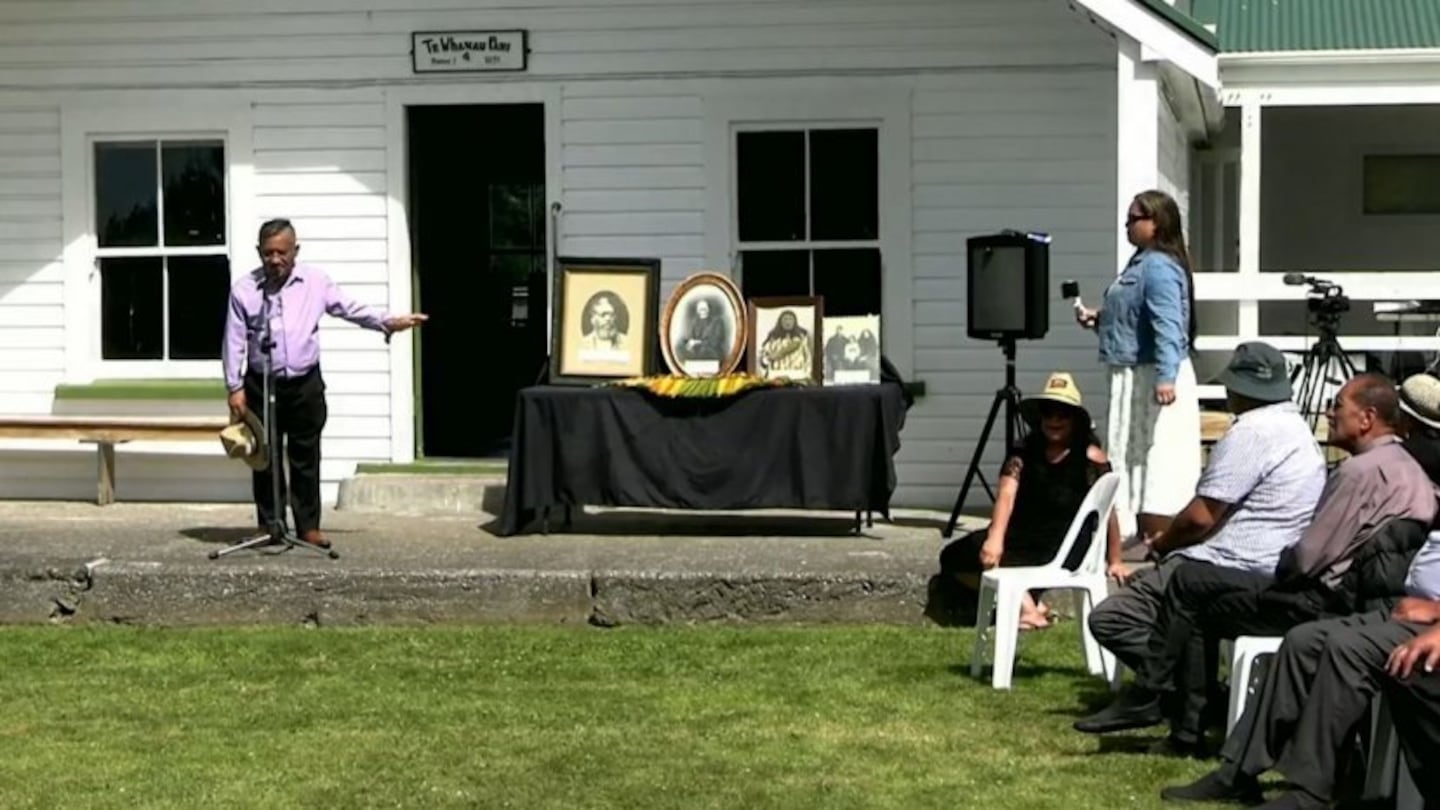Official ceremony at Pākaraka Marae returning the name Maxwell to its original name Pākaraka. Photo source / Te Korimako o Taranaki, Facebook
Members of the community and local iwi have united to mark the installation of new Pākaraka signs at the south Taranaki town, formally named Maxwell.
A pōwhiri and blessing ceremony took place at Pākaraka Marae on Saturday hosted by Ngāti Maika, hapū of Taranaki iwi Ngā Rauru Kītahi.
Associations with the name Maxwell have been a grievance carried for generations and are a reminder of historical pain, in particular the attack on Māori children in 1868 in what is known as the Handley Woolshed incident.
The attack was made by a government militiaman, George Maxwell, a founding member of the Kai-iwi Yeomanry Cavalry Volunteers. In 1870 Pākehā settlers rebranded the town of Pākaraka to Maxwelltown in honour of the militiaman, who just two years earlier had fired on a group of unarmed Māori children, attacked them with sabres and killed two boys.
Land Information Minister Damien O'Connor described it as an "unprovoked attack". The area was named Maxwelltown shortly after his death and officially changed to Maxwell in 1927.
Ngāti Maika spokesperson Derek Carroll says, “The placement of the signage is an important part of the transition.”
Petition and applications to change the name
The Ngā Rauru Deed of Settlement recognised the Handley Woolshed incident and encouraged discussions between Whanganui District Council and the Ngā Rauru Iwi Authority regarding the town's name.
In 2020, Ngāti Maika launched a petition to reinstate the original name of Pākaraka, a move supported by the District Council. The following year, the hapū made an application to the New Zealand Geographic Board to change the name. 255 submissions were received with 189 supporting the name change.
O'Connor said the name change addressed long-standing grievances for mana whenua and is part of Crown obligations under Te Tiriti.
"None of the reasons given against changing, outweighed the case to right this wrong," said O'Connor.
The installation on Saturday was also supported by Waka Kotahi. They helped arrange a traffic management plan for the placing of the signs onto the posts by the hapū installation group and arranged for contractors, Higgins, to tighten bolts and level the signs.
Waka Kotahi NZ Transport Agency System Manager Rob Service says, “This has been a long journey for mana whenua and Waka Kotahi is in support of this historic occasion.”
More to come.



